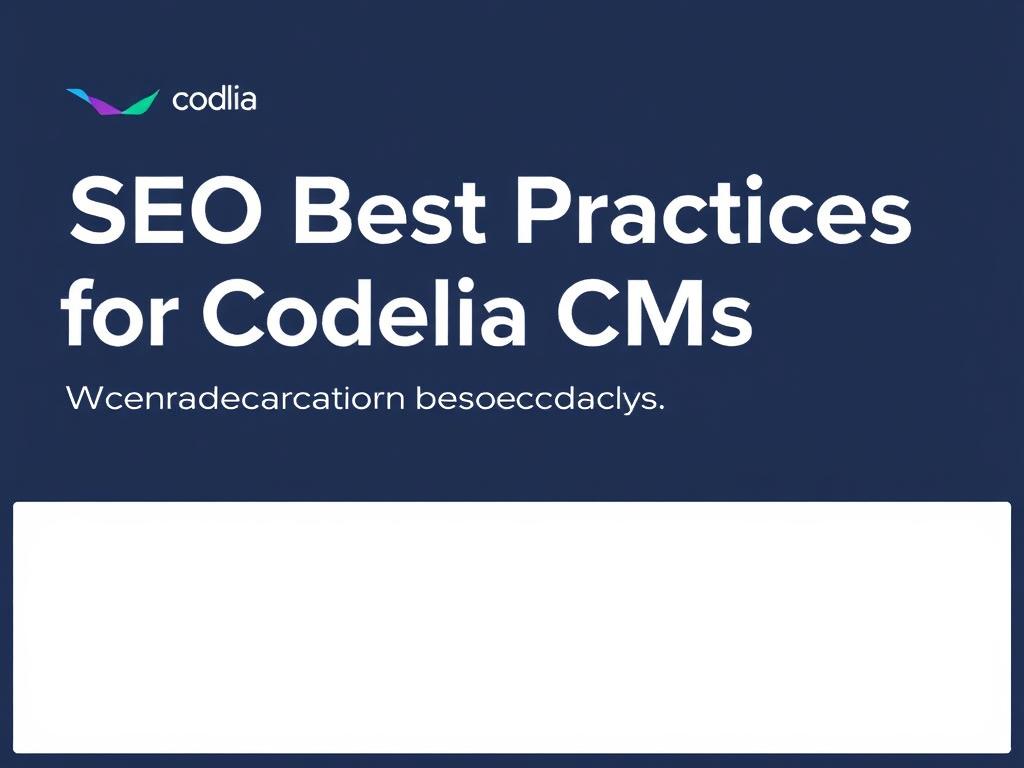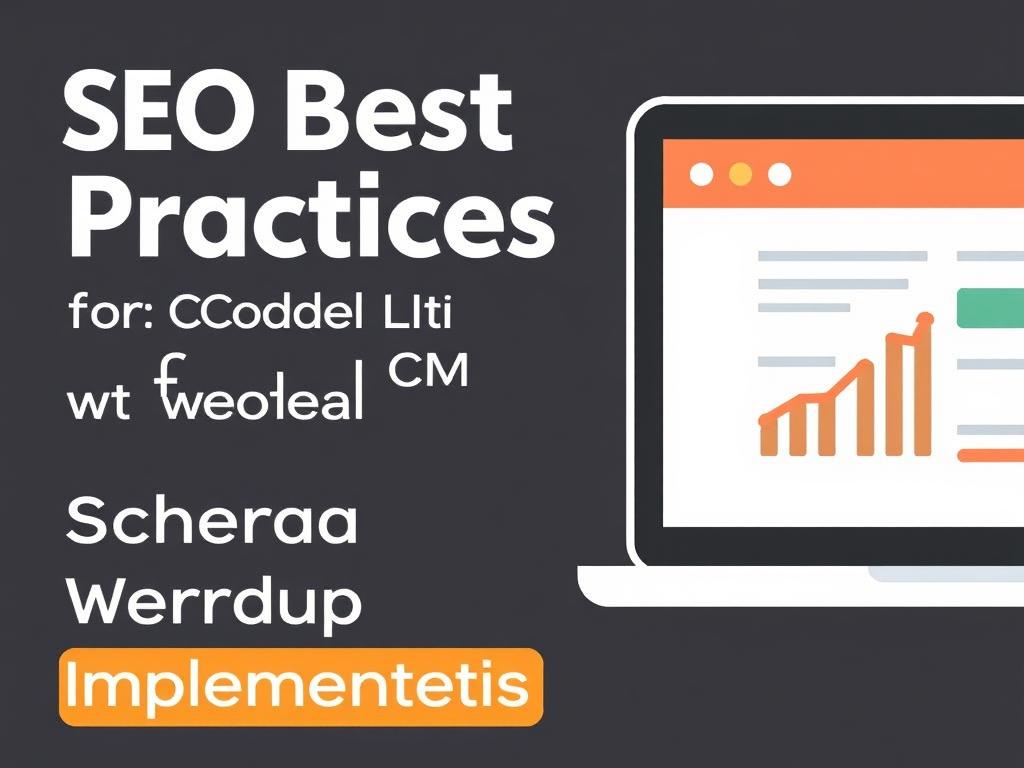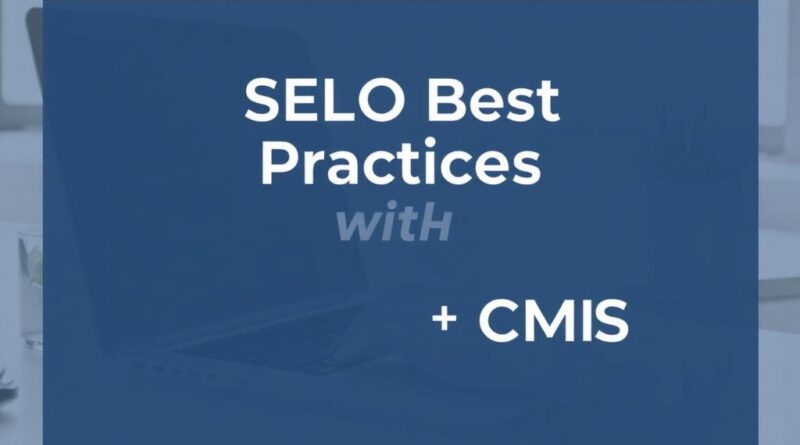SEO Best Practices for Codelia CMS Websites: Boost Your Site’s Visibility the Smart Way
When it comes to building and managing a website, having a great content management system (CMS) like Codelia is just the beginning. Whether you’re running a blog, an e-commerce store, or a portfolio site, optimizing your Codelia CMS website for search engines can make a world of difference in attracting visitors and growing your online presence. SEO Best Practices for Codelia CMS Websites are essential because even the most beautifully designed website won’t perform well if search engines struggle to understand its content. In this guide, we’ll take you through practical, effective strategies tailored specifically for Codelia, so you can take full advantage of what this CMS has to offer while making sure your site ranks higher in search results.
Understanding the Basics of SEO for Codelia CMS
Codelia CMS is known for its user-friendly interface, flexibility, and a robust framework that supports developers and content creators alike. However, before diving into advanced SEO techniques, it’s crucial to understand some foundational elements that can help set the stage for success. Search engines like Google rank web pages based on numerous factors, including site structure, content relevance, loading speed, and mobile-friendliness. Codelia CMS is equipped to handle these aspects well, but you need to implement best practices to ensure you’re making the most of its capabilities.
One of the first SEO Best Practices for Codelia CMS Websites is ensuring your URLs are clean and descriptive. Codelia enables you to customize URLs through its routing system, which means you can remove unnecessary query strings or numbers that don’t help either your users or search engines understand the content. For example, a URL like www.yoursite.com/products/blue-widgets is much better than www.yoursite.com/?page=23&id=4567.
Optimizing Your Site Structure
A well-organized site not only improves user experience but also helps search engines crawl your website more efficiently. With Codelia, you can create clear navigation menus and logical content hierarchies by using categories, tags, and internal linking effectively. Make sure your most important pages are easily accessible within three clicks from the homepage.
Key Components of a Solid Site Structure
| Component | Description | Why It Matters |
|---|---|---|
| Clear Navigation | Menus and links guiding users and crawlers | Improves usability and indexing |
| Logical Categories | Grouping related content logically | Helps search engines understand site themes |
| Internal Linking | Connecting pages within your site | Distributes page authority and aids navigation |
Content Optimization Strategies for Codelia CMS Websites
The heart of SEO always beats with great content. When you’re managing a Codelia CMS website, creating content that reflects keyword intent and adds value to your visitors is non-negotiable. Start by conducting keyword research that aligns with your niche. Incorporate those keywords naturally into your headings, paragraphs, image alt texts, and meta descriptions.
Writing for Both Humans and Search Engines
It’s tempting to cram keywords into every sentence, but that’s a practice best avoided. Instead, focus on writing clear and engaging content that answers your readers’ questions and encourages them to explore further. Use subheadings to break down the text, making it easier to scan. In Codelia CMS, you can easily add headings with proper HTML tags like
and
, which helps Google understand your content hierarchy.
Here’s a simple checklist for content optimization on your Codelia CMS website:
- Include primary keywords in your titles and first 100 words
- Use relevant secondary keywords naturally throughout the page
- Optimize images by adding descriptive alt text
- Create compelling meta descriptions between 150-160 characters
- Write engaging and easy-to-read content with short paragraphs
Technical SEO Tips Tailored for Codelia CMS

Technical SEO refers to the behind-the-scenes adjustments you make to help search engines crawl and index your website better. Codelia CMS offers various built-in tools and the ability to customize the backend, allowing you to tackle many technical SEO challenges head-on.
Page Speed and Mobile Optimization
Loading speed is a critical ranking factor. Fortunately, Codelia CMS supports modern web technologies like lazy loading images, caching, and minimized CSS/JavaScript files. Make sure to enable these features or install plugins to speed up your site. Additionally, your site’s mobile-friendliness is crucial as most internet users browse on their phones. Codelia’s responsive templates automatically adjust to different screen sizes, but it’s important to test your site’s mobile usability regularly with tools like Google’s Mobile-Friendly Test.
Schema Markup Implementation

Adding schema markup to your pages helps search engines understand the context of your content, which can improve your search snippets with rich information such as ratings, events, or product prices. Thanks to Codelia’s flexible architecture, you can add structured data markup manually or through compatible SEO plugins.
Leveraging Codelia CMS Plugins for SEO Enhancements

One of the great advantages of using Codelia CMS is its extensive ecosystem of plugins designed to simplify SEO tasks. Many of these plugins offer features like automated meta tag generation, sitemap creation, robot.txt management, and in-depth SEO audits.
Recommended SEO Plugins for Codelia CMS
- SEO Optimizer: Provides keyword analysis and meta tag suggestions.
- XML Sitemap Generator: Automatically creates and updates sitemaps for better indexing.
- Page Speed Booster: Helps compress files and optimize loading times.
Using these plugins in conjunction with manual SEO practices can amplify your website’s performance and search engine rankings.
Monitoring and Adjusting Your SEO Strategy
SEO is not a one-time effort but an ongoing process. After implementing SEO Best Practices for Codelia CMS Websites, it’s important to monitor your site’s performance regularly. Make use of tools like Google Analytics and Google Search Console to track visitor behavior, page rankings, and indexing status on search engines.
Key Performance Indicators (KPIs) to Track
| SEO Metric | What it Measures | Why It’s Important |
|---|---|---|
| Organic Traffic | Number of visitors from search engines | Indicates visibility and reach |
| Click-Through Rate (CTR) | Percentage of searchers clicking your link | Shows effectiveness of titles and meta descriptions |
| Keyword Rankings | Position of your pages for target keywords | Helps measure SEO success |
| Bounce Rate | Percentage of visitors leaving quickly | Highlights user engagement issues |
Adjust your content, keyword strategy, and technical settings based on data insights to keep improving your website’s SEO.
Conclusion
Optimizing your Codelia CMS website for SEO is a rewarding process that combines creative content, smart site structuring, and technical finesse. By following these SEO Best Practices for Codelia CMS Websites—from cleaning up URLs and organizing your site structure to leveraging plugins and analyzing your SEO data—you set a solid foundation for increased organic traffic and better search rankings. Remember, SEO is an ongoing journey, so keep refining your approach and stay updated with the latest trends. With patience and consistent effort, your Codelia site will stand out in search results, attracting and engaging more visitors than ever before.

